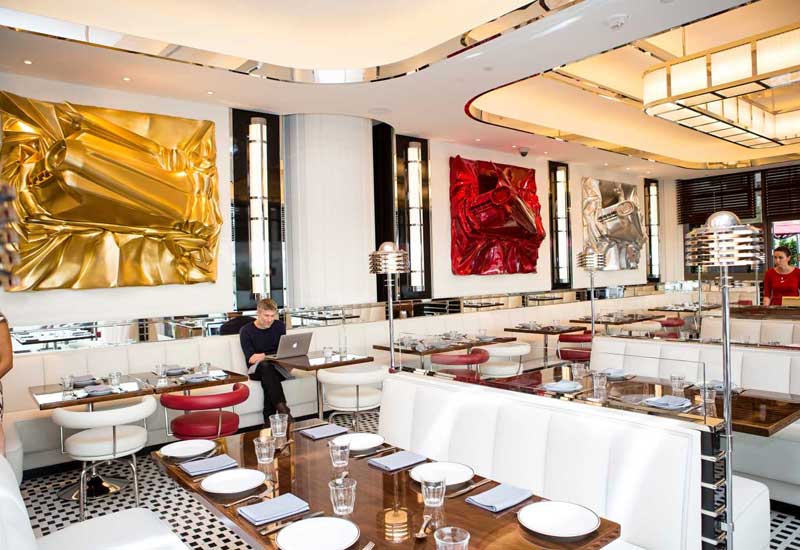 The designer for Firebird by Michael Mina and Four Seasons DIFC was Adam Tihany, who Mina has worked with numerous times.
The designer for Firebird by Michael Mina and Four Seasons DIFC was Adam Tihany, who Mina has worked with numerous times.
No conversation about the growth of Dubai’s culinary scene would be complete without addressing the realities for restaurateurs looking to make their mark.
Discussing how he intends to make Firebird a success against Dubai’s saturated backdrop, Mina states: “Our strategy [to deal with the competition] is to be who we are. We’re bringing something new and different to the market, and I’ve grown up in a Middle East household in the United States so I have a good idea of the flavour profile that clients have here. I cook in the way I was raised, based on my mum’s cooking, and adapted for the United States.
"In the US, you wouldn’t put salt and pepper in the honey, for example, but because I grew up in a family where they always did that, I do it in my restaurants and people love it.
“I’m confident that I have a good handle on what the market wants and once we open the doors, we will keep adapting. I also think we are very lucky to be part of Four Seasons and in an area where people are already dining.”
He believes in the constant evolution of a concept, remarking that while Firebird has “a very good menu”, it will be different a year from now. “You have to keep moving forward as seasons change and new product comes, and keep elevating as staff get more trained and cooks get better.”
Elaborating on his previous points about launching Firebird in a competitive market, Mina says long-term vision and remaining true to what you set out to do is imperative.
“The first thing that you learn when you are launching a restaurant is that your goal is not to come in and create something that is hot and has a buzz; this should be a by-product of your philosophy and foundation. My philosophy and foundation is about how do we connect with our guests and foster those long-term relationships?
“Everything plays a part in that — great food, the speed at which guests want to eat and the amount of interaction with the staff that they want. You have to look at it one customer at a time and that all starts with training, which is why we brought 20 people out here to train the staff. It’s important to take that time to work the staff.”
He adds: “Restaurants are an interesting animal — every day will be better or worse than it was the day before. It is never going to be the same because it has too many moving parts. If you can create a culture in which each day, everybody’s goal is to improve and you keep moving forward, you end up with a restaurant that has a long run. That’s the goal; we don’t just want to be hot for a year.”
The learning process extends to the man in charge as well, with Mina remarking that any time a chef thinks he knows everything, he can visit another country and realise how much he still has to learn in his profession.
“You could live 20 lifetimes and never learn it all as a chef and that is why it is the best industry. I feel as fortunate as you can be, to be in the career I chose,” he concludes.

| Advertisement |









 Search our database of more than 2,700 industry companies
Search our database of more than 2,700 industry companies









